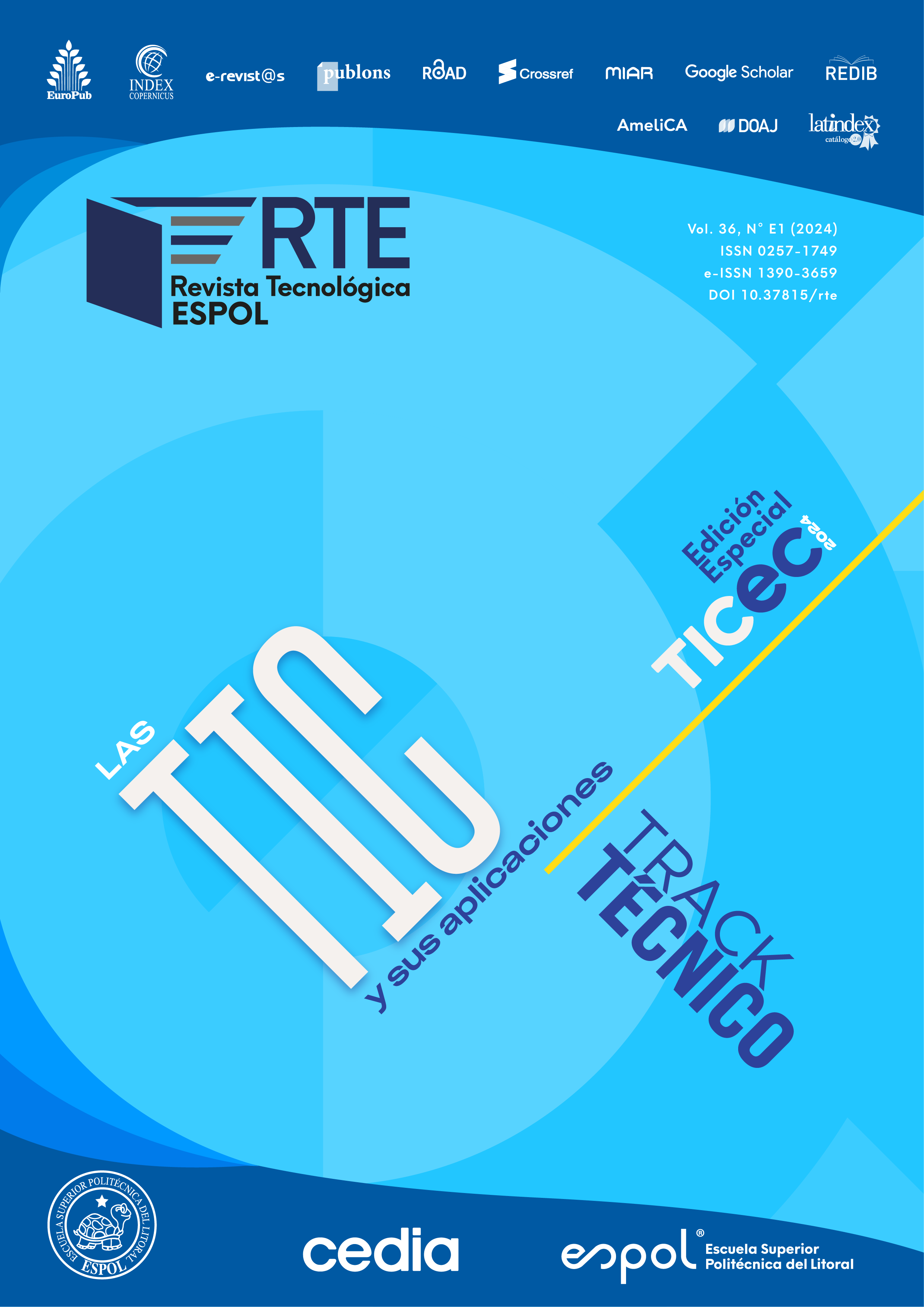El compromiso estudiantil (engagement, en inglés) en el aprendizaje es crucial para el rendimiento académico, la motivación y la participación activa. Sin embargo, medir y dar cuenta del engagement estudiantil, tanto en sesiones presenciales como en línea, sigue siendo un desafío para los educadores. Los métodos existentes, como los autoinformes, las entrevistas e incluso las herramientas de seguimiento ocular en tiempo real, carecen de un enfoque de participación multidimensional (es decir, cognitivo, afectivo y conductual). En respuesta, este artículo presenta el desarrollo y evaluación de MoTE, una herramienta en tiempo real para monitorear el engagement de los estudiantes. Siguiendo una metodología de Investigación Basada en el Diseño, detallamos las fases de identificación de indicadores y visualizaciones para satisfacer las necesidades de profesores y estudiantes, culminando con la propuesta de un prototipo inicial. Se finaliza con la evaluación con 146 estudiantes en contextos presenciales y en línea, proporcionando información valiosa sobre los indicadores, paneles y funcionalidades para diseñar una herramienta efectiva de seguimiento del engagement de los estudiantes. Este trabajo no solo propone un enfoque innovador para evaluar el engagement, sino que también abre vías para futuras investigaciones y aplicaciones prácticas en educación.

Esta obra está bajo una licencia internacional Creative Commons Atribución-NoComercial 4.0.
Referencias
Anand, R., & Gupta, N. (2023). Impact of online learning on student engagement and academic performance. Praxis International Journal of Social Science and Literature, 6(7), 29–40. https://doi.org/10.51879/PIJSSL/060703
Aslan, S., et al. (2019). Investigating the impact of a real-time, multimodal student engagement analytics technology in authentic classrooms. In Proceedings of the 2019 CHI Conference on Human Factors in Computing Systems (pp. 1–12). ACM. https://doi.org/10.1145/3290605.3300534
Bannan-Ritland, B. (2003). The role of design in research: The integrative learning design framework. Educational Researcher, 32(1), 21–24. https://doi.org/10.3102/0013189X032001021
Barkley, E. F. (2010). Student engagement techniques: A handbook for college faculty. Jossey-Bass.
Beekhoven, S., & Dekkers, H. (2005). The influence of participation, identification, and parental resources on the early school leaving of boys in the lower educational track. European Educational Research Journal, 4(3), 195–207. https://doi.org/10.2304/eerj.2005.4.3.4
Bond, M., et al. (2020). Mapping research in student engagement and educational technology in higher education: A systematic evidence map. International Journal of Educational Technology in Higher Education, 17(1), 2. https://doi.org/10.1186/s41239-019-0176-8
Bonner, E., et al. (2022). Measuring real-time learner engagement in the Japanese EFL classroom. Innovation in Language Learning and Teaching, 1–11. https://doi.org/10.1080/17501229.2021.2025379
Darr, C. W. (2012). Measuring student engagement: The development of a scale for formative use. In S. L. Christenson, et al. (Eds.), Handbook of Research on Student Engagement (pp. 707–723). Springer US. https://doi.org/10.1007/978-1-4614-2018-7_34
Finn, J. D., & Zimmer, K. S. (2012). Student engagement: What is it? Why does it matter? In S. L. Christenson, et al. (Eds.), Handbook of Research on Student Engagement (pp. 97–131). Springer US. https://doi.org/10.1007/978-1-4614-2018-7_5
Fredricks, J. A., et al. (2004). School engagement: Potential of the concept, state of the evidence. Review of Educational Research, 74(1), 59–109. https://doi.org/10.3102/00346543074001059
Hofkens, T. L., & Ruzek, E. (2019). Measuring student engagement to inform effective interventions in schools. In Handbook of Student Engagement Interventions (pp. 309–324). Elsevier. https://doi.org/10.1016/B978-0-12-813413-9.00021-8
Imlawi, J. (2021). Students’ engagement in e-learning applications: The impact of sound’s elements. Education and Information Technologies, 26(5), 6227–6239. https://doi.org/10.1007/s10639-021-10605-0
Jia, L.-Z., et al. (2018). Design by analogy: Achieving more patentable ideas from one creative design. Chinese Journal of Mechanical Engineering, 31(1), 37. https://doi.org/10.1186/s10033-018-0234-5
Kaye, L. K., et al. (2017). Emojis: Insights, affordances, and possibilities for psychological science. Trends in Cognitive Sciences, 21(2), 66–68. https://doi.org/10.1016/j.tics.2016.10.007
Lidwell, W., et al. (2003). Universal principles of design. Rockport.
McKenney, S. E., & Reeves, T. C. (2019). Conducting educational design research. Routledge/Taylor & Francis Group.
Nakamura, J., & Csikszentmihalyi, M. (2009). Flow theory and research. In S. J. Lopez & C. R. Snyder (Eds.), The Oxford Handbook of Positive Psychology (pp. 194–206). Oxford University Press. https://doi.org/10.1093/oxfordhb/9780195187243.013.0018
Nielsen, J. (1993). Usability engineering. Academic Press.
Pérez-Sanagustín, M., et al. (2022). Designing a Moodle plugin for promoting learners’ self-regulated learning in blended learning. In I. Hilliger, et al. (Eds.), Educating for a New Future: Making Sense of Technology-Enhanced Learning Adoption (pp. 324–339). Springer International Publishing. https://doi.org/10.1007/978-3-031-16290-9_24
Reeve, J., et al. (2020). How and why students make academic progress: Reconceptualizing the student engagement construct to increase its explanatory power. Contemporary Educational Psychology, 62, 101899. https://doi.org/10.1016/j.cedpsych.2020.101899
Reimann, P. (2011). Design-based research. In L. Markauskaite, et al. (Eds.), Methodological Choice and Design (pp. 37–50). Springer Netherlands. https://doi.org/10.1007/978-90-481-8933-5_3
Reschly, A. L., & Christenson, S. L. (2012). Jingle, jangle, and conceptual haziness: Evolution and future directions of the engagement construct. In S. L. Christenson, et al. (Eds.), Handbook of Research on Student Engagement (pp. 3–19). Springer US. https://doi.org/10.1007/978-1-4614-2018-7_1
Ries, E. (2011). The lean startup: How today’s entrepreneurs use continuous innovation to create radically successful businesses. Crown Business.
Rimm-Kaufman, S. E., et al. (2009). The contribution of children’s self-regulation and classroom quality to children’s adaptive behaviors in the kindergarten classroom. Developmental Psychology, 45(4), 958–972. https://doi.org/10.1037/a0015861
Schrepp, M. (2023). Enhancing the UEQ heuristic for data cleansing by a threshold for the number of identical responses. https://rgdoi.net/10.13140/RG.2.2.35853.00480
Sosa Neira, E. A., et al. (2017). Emerging technologies (ETs) in education: A systematic review of the literature published between 2006 and 2016. International Journal of Emerging Technologies in Learning (iJET), 12(5), 128. https://doi.org/10.3991/ijet.v12i05.6939
Uçar, M. U., & Özdemir, E. (2022). Recognizing students and detecting student engagement with real-time image processing. Electronics, 11(9), 1500. https://doi.org/10.3390/electronics11091500
ViewSonic. (2023). Sens. https://myviewboard.com/products/sens/
Wong, Z. Y., & Liem, G. A. D. (2022). Student engagement: Current state of the construct, conceptual refinement, and future research directions. Educational Psychology Review, 34(1), 107–138. https://doi.org/10.1007/s10648-021-09628-3
Zapata, G., et al. (2018). Compromiso estudiantil en educación superior: Adaptación y validación de un cuestionario de evaluación en universidades chilenas. Calidad en la Educación, 48, 204. https://doi.org/10.31619/caledu.n48.482











